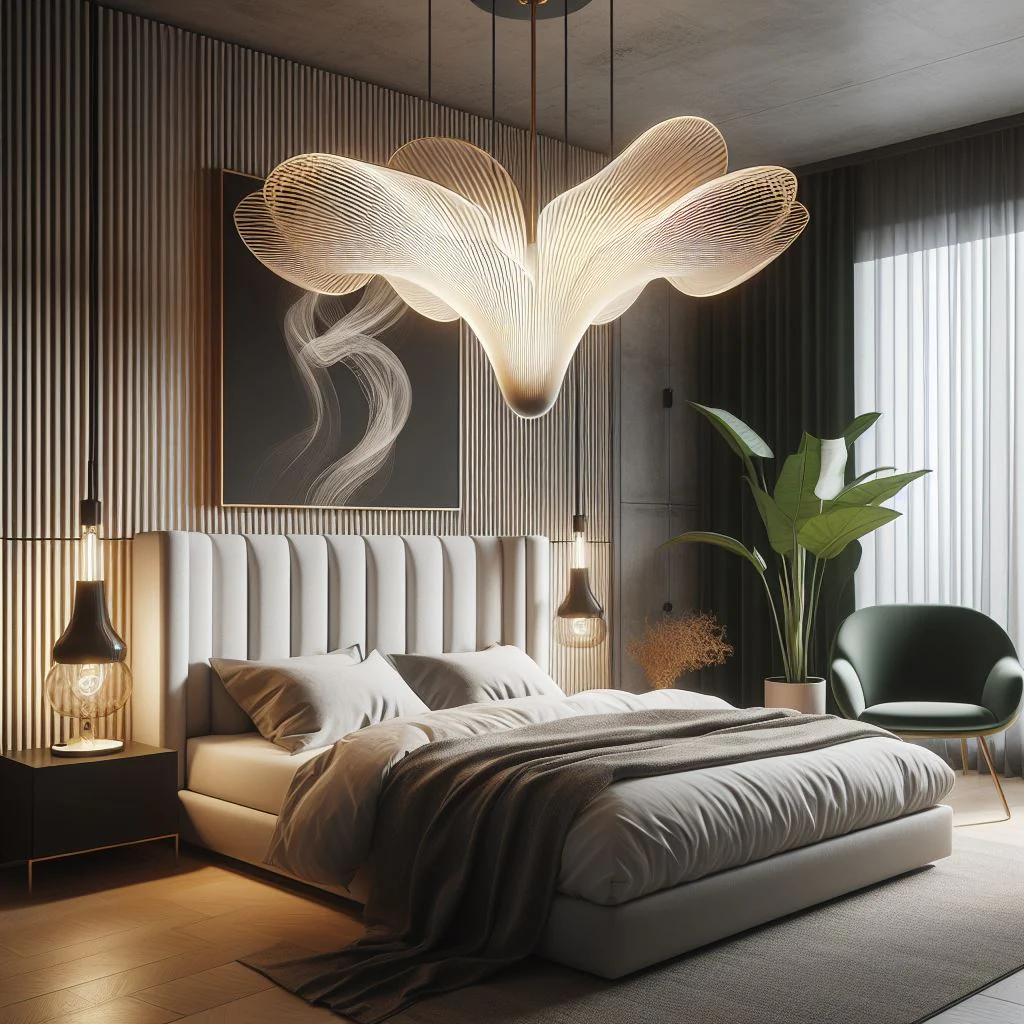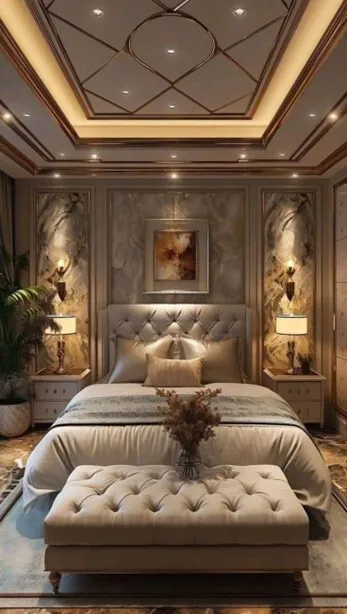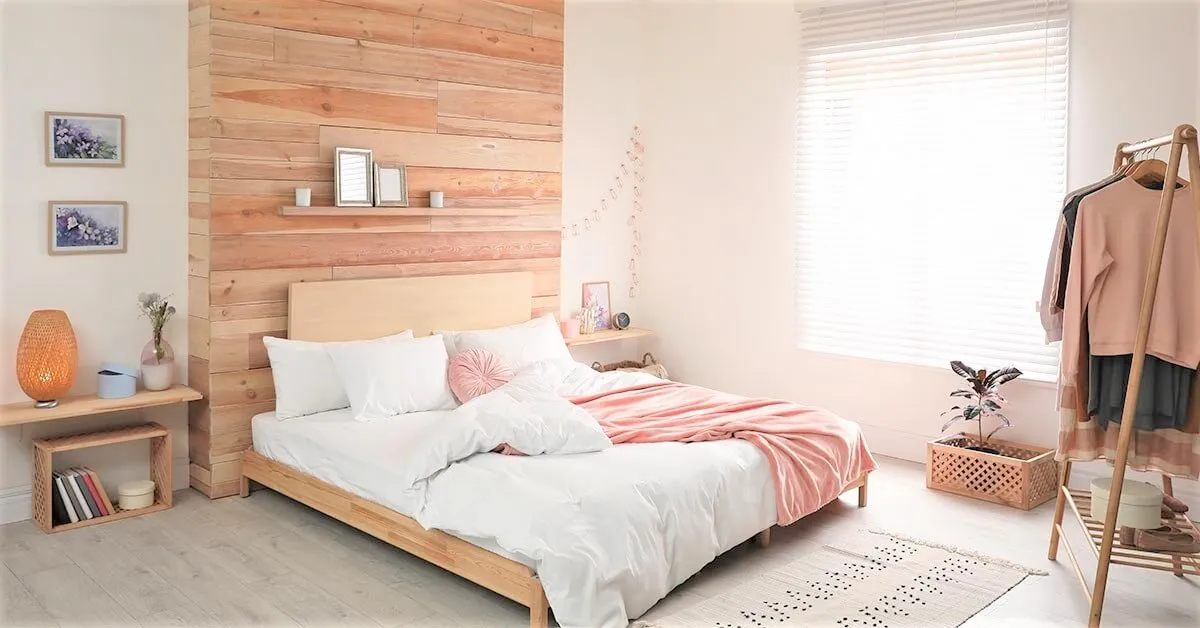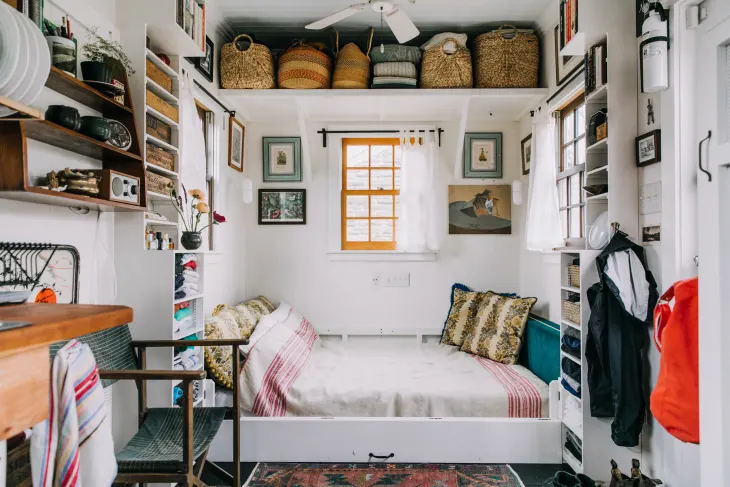Hey Readers! Today I bought a unique design called Kintsugi Interior Design for Bedroom based on the philosophy of finding beauty in imperfection. In a world where perfection is often sought after, Kintsugi offers a refreshing perspective that celebrates flaws and imperfections. In this blog, we will explore how Kintsugi Interior Design for Bedroom exudes warmth, serenity, and a deep connection to the concept of beauty in imperfection.
What is Kintsugi?
Kintsugi, meaning “golden joinery,” is a Japanese art practiced for centuries. In Kintsugi, people repair broken pottery by filling the cracks with mixed gold, silver, or platinum. Instead of covering up the cracks, Kintsugi makes them stand out, turning the damage into something beautiful and unique. This process not only fixes the pottery but also makes it more valuable, symbolizing how something broken can be transformed into something even more special.
Philosophy of Kintsugi
Kintsugi began in the 15th century when a Japanese shogun sent a broken tea bowl to China for repair. The bowl came back fixed with ugly metal staples, which didn’t satisfy the shogun. Japanese craftsmen then decided to repair broken pottery in a way that was both useful and beautiful. This led to the creation of Kintsugi, a method that not only fixed the pottery but also made it more beautiful. Kintsugi is based on the Japanese idea of “wabi-sabi,” which sees beauty in imperfections, change, and the natural cycle of life. It teaches us to accept flaws as part of our story, showing that repairs can make something more meaningful and beautiful.
Why Choose Kintsugi for Interior Design?
In interior design, the idea of Kintsugi fits well with the trend of valuing authenticity, sustainability, and the unique character of our living spaces. As people move away from plain, uniform designs, Kintsugi shows how to embrace the beauty of imperfections in our homes. This is especially important in bedrooms, where it’s key to create a space that feels personal, calm, and connected. By using Kintsugi principles, we can turn our bedrooms into places that tell a story, celebrate imperfections, and bring a sense of peace and wholeness.
Key Elements of Kintsugi Interior Design for Bedroom
Kintsugi-inspired interior design uses natural materials, organic shapes, and warm, earthy colors. These features combine to create a space that feels grounded, real, and welcoming.
Natural Materials
In Kintsugi interior design for bedrooms, uses wood, stone, and ceramics. These materials, with their natural flaws and beauty, reflect the Kintsugi philosophy. For instance, a wooden bed frame with visible grain or a stone lamp with rough edges can be key pieces in a Kintsugi-style bedroom.
Metallic Accents
Use gold, brass, and other metallic accents to highlight imperfections and add elegance. For example, a vase with gold accents or a lamp with a metallic base draws attention to the beauty of flaws instead of hiding them.
Texture and Organic Shapes
Kintsugi’s design focuses on texture and natural shapes. You can create this by combining smooth and rough materials, like polished wood with raw stone, or furniture and decor with natural, imperfect forms.
Color Palette
The color palette in Kintsugi Interior Design for Bedroom plays a major role:
-
- Earthy Tones: Deep browns, soft beiges, and warm whites form the foundation of the color scheme, creating a cozy and welcoming environment.
- Gold and Metallic Accents: These accents provide contrast and emphasize the Kintsugi theme of finding beauty in imperfections. A hint of gold on a pillow or a metallic thread in a throw can subtly tie the room together.
- Natural Hues: Gentle hints of green or blue can be incorporated to mimic the natural elements and bring a sense of life and tranquility into the space.
Texture and Materials in Kintsugi Interior Design for Bedroom
In Kintsugi interior design for bedrooms, texture is key. Mixing smooth and rough surfaces, along with natural materials like linen, cotton, and wool, brings depth and warmth to the room. For instance, combining a linen duvet with a woolen throw adds layers that feel comforting to the eyes and touch.
Apply Kintsugi Interior Design for Bedroom
Furniture Selection
For selecting furniture during Kintsugi Interior Design for Bedroom consider these things:
-
- Wooden Furniture: Choose furniture with visible grain, knots, or natural flaws. These imperfections add character and a sense of authenticity to the space.
- Vintage or Upcycled Pieces: Incorporating vintage or upcycled furniture can add a unique, personal touch. Look for items that have a history, visible repairs, or signs of wear that contribute to the overall aesthetic.
- Metallic Elements: Add metallic elements, such as gold or brass handles, legs, or accents, to tie in with the Kintsugi theme. These touches will emphasize the beauty in the details and the celebration of imperfection.
Wall Treatments
Walls offer a great opportunity to infuse Kintsugi Interior Design for the Bedroom.
- Textured Paints or Wallpapers: Use textured paints or wallpapers that mimic the look of cracked or aged surfaces. These treatments can create a focal point that draws the eye and adds depth to the room.
- Wall Art: Choose wall art that reflects Kintsugi designs or emphasizes the beauty of imperfection. Consider DIY Kintsugi-inspired wall decor, such as framing broken pottery mended with gold, to create a personalized and meaningful piece.
Bedding and Textiles in Kintsugi Interior Design for Bedroom
Bedding and textiles are essential for creating a comfortable and inviting Kintsugi-inspired bedroom.
-
- Natural Fabrics: Layer soft, natural fabrics in neutral tones to create a sense of warmth and coziness. Linen sheets, cotton duvet covers, and woolen blankets all contribute to the tactile richness of the space.
- Kintsugi-Inspired Accents: Incorporate throws or pillows with gold stitching or embroidery that reflects Kintsugi themes. These subtle touches will tie the bedding into the overall design.
- Organic Patterns: Choose patterns that mimic organic shapes or cracks to reinforce the Kintsugi concept in a subtle yet impactful way.
Light selection
Lighting plays a crucial role in setting the mood in a Kintsugi-inspired bedroom.
-
- Warm, Ambient Lighting: Opt for warm, ambient lighting to create a serene and calming atmosphere. Lamps with soft, diffused light will enhance the feeling of tranquility.
- Handmade or Imperfect Fixtures: Select lamps or fixtures with a handmade or imperfect look, such as those with uneven shapes or visible seams. These imperfections add to the authenticity and charm of the space.
- Metallic Lighting Fixtures: Incorporate metallic lighting fixtures that tie in with the Kintsugi theme. A lamp with a gold or brass base can serve as a functional piece and a statement of beauty in imperfection.
Decorative Items
Decorative items allow you to personalize Kintsugi Interior Design for Bedroom and reinforce the design philosophy.
-
- Kintsugi Pottery: Display Kintsugi pottery or vases as statement pieces. These items not only highlight the beauty of the art form but also serve as a daily reminder of the value of embracing imperfections.
- Natural Elements: Incorporate natural elements like stones, branches, or leaves to connect with the organic nature of Kintsugi. These elements bring a sense of life and continuity to the space.
- Mirrors with Distressed Frames: Use mirrors with aged or distressed frames to add character and reflect the Kintsugi philosophy subtly.
Art and Sculptures
Artwork and sculptures can further reinforce the Kintsugi-inspired design.
-
- Kintsugi-Inspired Art: Choose artwork that reflects the Kintsugi philosophy, celebrating imperfection or repair. This could be abstract pieces that mimic the look of cracks or images that convey the beauty of imperfection.
- Natural Sculptures: Incorporate sculptures or figurines made from natural materials or with a visibly handmade quality. These pieces add texture and interest to the space while staying true to the Kintsugi theme.
Conclusion
Kintsugi Interior Design for Bedroom offers a powerful way to create a beautiful as well as meaningful bedroom. Hospitality design firms can also incorporate this approach, embracing the philosophy of finding beauty in imperfection to craft unique and inviting spaces.
FAQs
-
- What is the Concept of Kintsugi Design?
Kintsugi’s design embraces flaws by highlighting imperfections, often with gold or silver, turning damage into a beautiful feature that adds value and tells a story.
-
- What Does Kintsugi Symbolize?
Kintsugi symbolizes resilience, healing, and the beauty of imperfection, emphasizing that damage and repair are integral parts of an object’s or space’s history.
-
- What Are the Three Types of Kintsugi?
The three types of kintsugi are:
-
- Crack Repair: Filling cracks with gold or lacquer.
- Piece Method: Replacing missing pieces with new, contrasting materials.
- Joint-Call Method: Using different materials to create a patchwork effect.
-
- What Are the Disadvantages of Kintsugi?
Kintsugi can be time-consuming and delicate, requiring skilled craftsmanship. The repair process can be expensive and may not be suitable for all materials.
-
- Is Kintsugi Expensive?
Yes, kintsugi can be expensive due to the craftsmanship, time, and materials involved, particularly if using genuine gold or silver.




